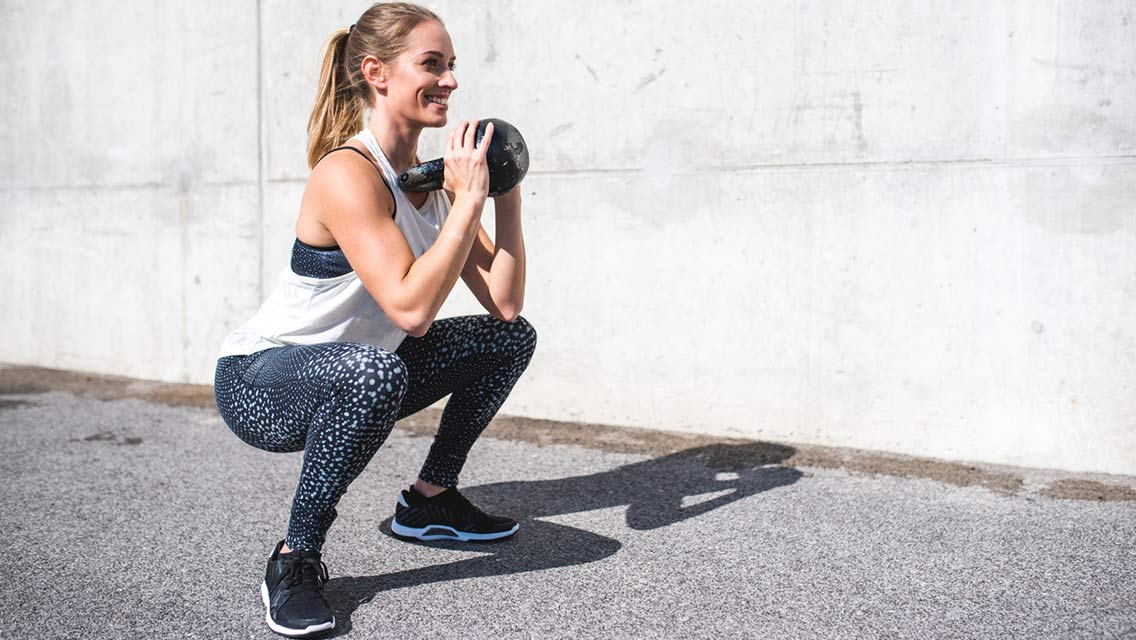Q1: Should I try Tabata training?
Q | I keep reading about Tabata, which the media often touts as a miracle workout. What is Tabata? And how do I know if it’s the right regimen for me?
A | Be prepared to sweat! The Tabata Protocol — named for the Japanese researcher and professor who first studied and publicized the method in 1996 — doesn’t sound overly taxing on paper, but in practice, it’s one of the most intense forms of interval training you can do.
The format is simple: Choose a low-resistance, repetitive form of exercise (e.g., riding an exercise bike, doing jumping jacks, rowing on a machine, jumping rope), and do six to eight maximum-effort 20-second intervals, each followed by 10 seconds of rest, for a workout totaling three or four minutes. That’s it.
What sets this system apart from many other workout routines, says exercise physiologist Christopher Scott, PhD, is its across-the-board benefits for both your aerobic system (which powers you through low-intensity exercise like easy jogging) and your anaerobic system (which provides energy during brief, high-effort forms of exercise, like sprints).
Because your work periods are so short, you won’t have enough time to fully catch your breath between sets — which means your heart and lungs get a serious workout resembling the kind you experience from a hard, fast run. And because you’re pushing yourself as hard as possible during those 20-second work periods, your muscles get a tough challenge as well — similar to that from a tough set of lunges or squats.
Effective and time-efficient though it can be, full-on Tabata training may be too taxing for some exercisers: Beginners should stick to just three minutes of Tabata intervals and dial the intensity back — say, 70 to 80 percent of your full capacity — during those 20-second work periods. For more information, see “The Tabata Tune-Up”.
Q2: How do I stop running heel-toe?
Q | I’ve heard I should be running on the balls of my feet instead of heel-to-toe, which feels more natural to me. How do I break the habit?
A | Footstrike, or how a runner’s feet contact the ground as he or she runs, is a hotly debated topic among runners. A few years ago, many coaches encouraged heel-to-toe runners to learn to run on the balls of their feet; today, most of them take a more moderate approach.
“You don’t need to run on the forefoot,” says USA Triathlon coach and former triathlon champion Jim Vance. “You just need to learn to land flat-footed.” Heel-striking, Vance explains, sends a shockwave up your leg, which can lead to injury in your knees, hips, and lower back. By contrast, he says, “Landing flat-footed allows the arch of your foot to absorb much of that shock.”
To make the transition, Vance advises that you focus on the position of your torso as you run, rather than on your feet. “Lean forward from the hips, like a ski-jumper,” he says. This slightly more aggressive posture will up your cadence (the number of steps you take per minute) and most likely resolve your tendency to heel-strike. “When cadence increases, the foot doesn’t have time to strike heel first,” explains Vance. “It will naturally adjust to a flat-footed landing.”
Q3: What can I do to get in shape for basketball?
Q | I want to get back into pickup basketball, but I haven’t played in a few years and I’m not sure my body is ready for the experience. What can I do at the gym to prepare myself for the court?
A | Smart training for any sport always starts general, then gets specific as the season approaches. If you’re starting from scratch, you’ll need to build some basic strength and fitness before you start perfecting your skyhook. “Overall strength training will help minimize your likelihood for injury once you start training,” says Ryan Capretta, MS, CSCS, owner of Proactive Sports Performance in Westlake Village, Calif. “By strengthening the muscles, you’ll take stress off the joints when you play.” (For a great beginners’ strength-training program, see “One Month to Muscles.”)
Next step? “Get good at jumping,” says Capretta. Start by trying five sets of five jumps onto a low box, focusing on landing as quietly as possible on each repetition. Between reps, step down off the box, one foot at a time. Over the course of a few weeks, increase the height of the box. Then, says Capretta, get hopping. (For directions, see box below left.)
After two to four weeks of jump training, says Capretta, add some “M cone” runs to improve agility: Set up five cones in an “M” pattern about 10 to 15 yards square. Starting at the bottom left corner, weave around the cones as fast as you can, facing the “top” of the M throughout the drill. (Your route will look like this: Run forward to the top left corner, then backward to the bottom middle corner, then forward again to the top right corner, and finally backward to the bottom right corner.) Rest for 30 seconds or so, then repeat the drill, this time starting at the bottom right corner of the M. Repeat until you can’t maintain full speed for the entire drill. “Agility drills like this will improve your ability to change directions quickly,” says Capretta.
Do this three times a week (after a general warm-up but before strength training), and in a few weeks you should have no problem keeping up on the court. Have fun!
Fitness Fix: Relief for Muscle Cramps
Muscle cramps can be a serious pain. Whether you’re a recreational athlete or serious exerciser, a cramp can leave you limping off the field or out of the gym, grabbing your leg in agony.
A 2008 study published by the American College of Sports Medicine found that they have two distinct causes:
1. Overwork
Lifting a heavier weight or running longer or faster than you’re accustomed to can shut down the mechanism responsible for inhibiting muscle contraction. When that happens, the overworked muscle turns on — hard — and you’re down for the count. If a muscle cramp is due to overwork, the sensation is usually localized in one spot.
2. Dehydration
As sweat pours off you during your weekend bike ride or Ultimate Frisbee match, you lose more than moisture, explains Sue Falsone, PT, vice president of Performance Physical Therapy and Team Sports. “You also lose sodium, potassium, and other electrolytes responsible for regulating muscle contraction.” If the fluid in your body drops below a certain point, your muscles — some or many of them — may seize up.
You can avoid overwork-related cramps by ramping up the intensity and duration of your workouts gradually: A good rule of thumb is to increase the length or intensity of your workouts by no more than 10 percent per week. If you get a cramp, Falsone recommends gently stretching the cramping muscle, or trying to contract the muscle opposite the affected one (extend your leg if your hamstrings cramp, for example, or flex your foot back toward your shin if the cramp is in your calf).
To prevent dehydration-related cramps, always drink enough water to fend off thirst, especially when you’re exercising outdoors on hot days. “Thirst is an indication you’re already dehydrated,” says Falsone. Sipping is probably better than guzzling, however: You don’t want too much water sloshing around right before a soccer match.
If you become dehydrated enough to cause severe or bodywide cramping, stop what you’re doing immediately. “If allowed to go on, dehydration can eventually lead to heatstroke, which can be life-threatening,” says Falsone. Skip the stretching, go someplace cool, and get liquid in your system as soon as possible.




This Post Has 0 Comments